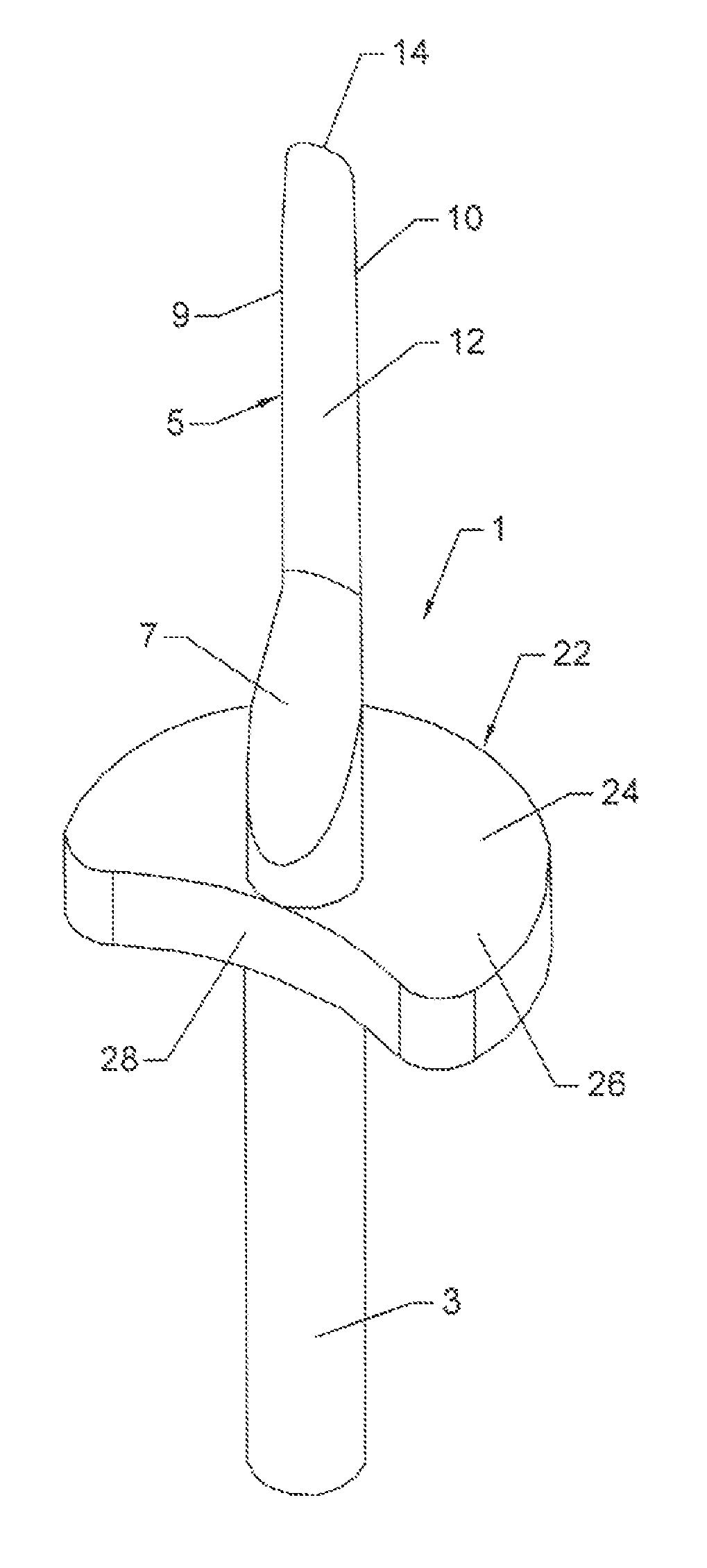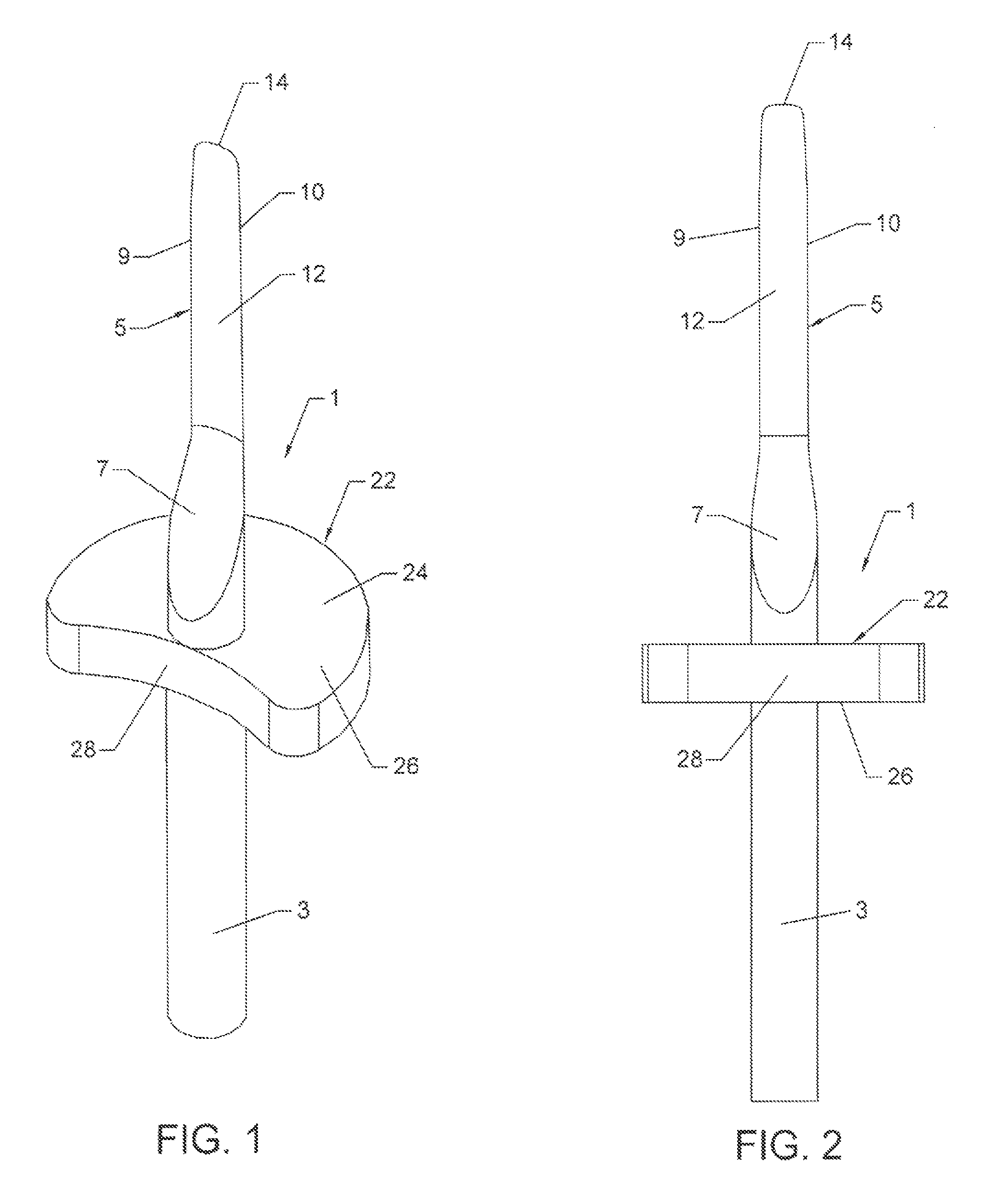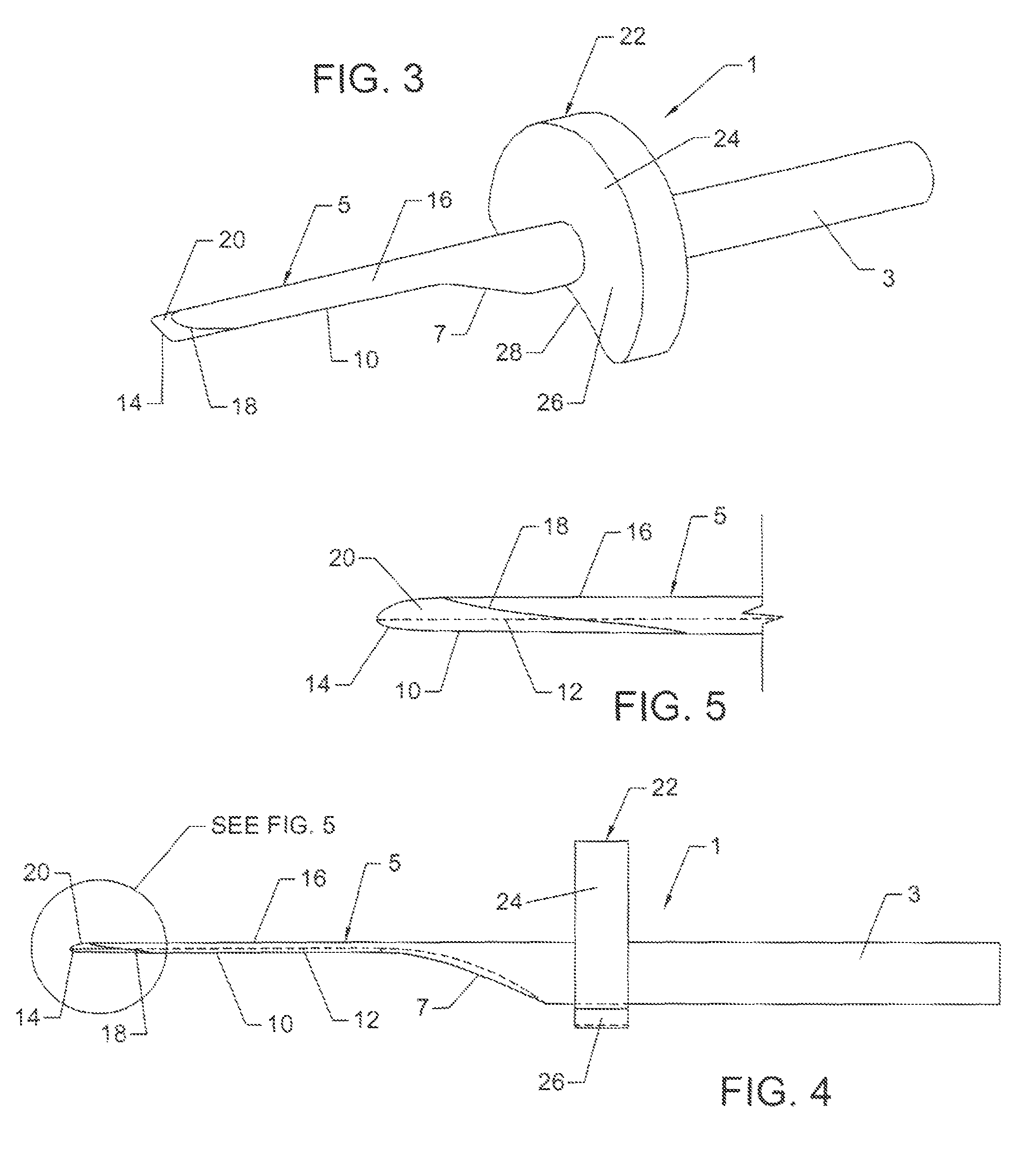Oscillating blade for cutting periodontal ligaments and luxating tooth roots
a cutting blade and periodontal ligament technology, applied in the field of longitudinally curved cutting blades, can solve the problems of increasing the likelihood of oral infection and decay, compromising the integrity and function of the crown or the root of the tooth, and the wisdom tooth has no functional utility for most patients, so as to prevent damage to the gum and bone of the patient, and cutting easily through the periodontal ligaments.
- Summary
- Abstract
- Description
- Claims
- Application Information
AI Technical Summary
Benefits of technology
Problems solved by technology
Method used
Image
Examples
Embodiment Construction
[0022]The double-edged cutting blade which forms the present invention is disclosed while referring to the drawings. As will be described while referring to FIG. 6, the cutting blade is adapted to be removably coupled to a conventional oscillating driver head of a slow speed oscillating dental hand piece (sometimes known as a right angle hand piece) or of a battery-operated cordless device at which the cutting blade is oscillated so as to be able to cut through the periodontal tissue of a dental patient undergoing oral surgery. It is to be recognized that the cutting blade of this invention can be used on both human and animal patients. As will be described in greater detail hereinafter, the cutting blade has a pair of razor sharp cutting edges. The cutting blade is subjected to an oscillatory or reciprocal (i.e., back and forth) movement during which the pair of cutting edges slice through the patient's tissue, particularly the tissue surrounding a tooth root to be excised. By way ...
PUM
 Login to View More
Login to View More Abstract
Description
Claims
Application Information
 Login to View More
Login to View More - R&D
- Intellectual Property
- Life Sciences
- Materials
- Tech Scout
- Unparalleled Data Quality
- Higher Quality Content
- 60% Fewer Hallucinations
Browse by: Latest US Patents, China's latest patents, Technical Efficacy Thesaurus, Application Domain, Technology Topic, Popular Technical Reports.
© 2025 PatSnap. All rights reserved.Legal|Privacy policy|Modern Slavery Act Transparency Statement|Sitemap|About US| Contact US: help@patsnap.com



